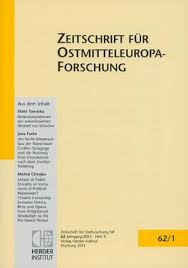Monuments as a Responsibility: Baltic German Learned Societies and the Construction of Cultural Heritage around 1900
Monuments as a Responsibility: Baltic German Learned Societies and the Construction of Cultural Heritage around 1900
Author(s): Kristina JõekaldaSubject(s): Education, Cultural history, Architecture, Nationalism Studies, 19th Century, Pre-WW I & WW I (1900 -1919), Politics and Identity, History of Art
Published by: Verlag Herder-Institut
Keywords: Heritage preservation; art history; art historiography; public education; popularization; Heimat; nationalism; identity; Baltic studies;
Summary/Abstract: My article deals with the (mostly medieval) German architectural heritage in present-day Estonia and with the history of monument preservation in the Baltic region in connection with the Baltic German identity. The central area of interest for me are the representations and constructions of this heritage in the texts written about monument preservation. With the Enlightenment and Romanticism of the late eighteenth century, the first Baltic German scholars—literati began to show interest in old houses and works of art. The University of Dorpat (Tartu) was re-established in the early nineteenth century, but local affairs were not included in its teaching curriculum. Because of this, many Baltic Germans felt compelled to research the regional history and historical monuments themselves. During the nineteenth century, numerous learned societies were established, some of which focused specifically on cultural heritage, for example the Gesellschaft für Geschichte und Altertumskunde der Ostseeprovinzen Russlands (Society for the History and Archaeology of the Baltic Sea Provinces of Russia), which was founded in 1834 and was based in Riga. In a situation where the Russian state and the Estonian and Latvian populations were also undergoing a process of cultural and national awakening, material heritage became a key element in the development of a Baltic German identity. With a shared patriotic agenda, the learned societies gave new impulses to monument preservation and, around 1900, they published a number of popularizing texts.
Journal: Zeitschrift für Ostmitteleuropa-Forschung
- Issue Year: 68/2019
- Issue No: 2
- Page Range: 189-222
- Page Count: 34
- Language: English

